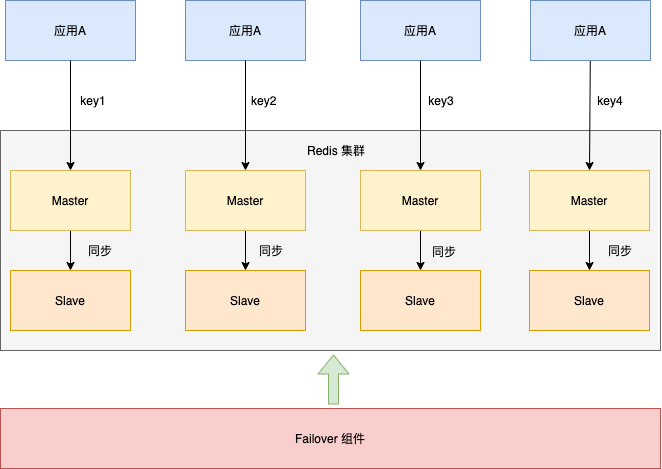redis Bitfield是Redis提供的一种用于处理二进制数据的数据结构。它可以将一个连续的二进制位序列看作一个位字段,并提供了一组命令来对这个位字段进行操作。
Redis Bitfield的作用是提供一种高效的方式来处理二进制数据。在传统的关系型数据库中,处理二进制数据通常需要使用BLOB或CLOB类型,这会导致性能问题和存储空间浪费。而Redis Bitfield使用位操作来处理二进制数据,可以大大提高处理速度和节省存储空间。
Redis Bitfield支持多种位操作,如AND、OR、NOT和XOR,以及位计数和位查找操作。这些操作可以用于实现各种应用场景,如用户画像、一元夺宝和其他需要处理二进制数据的任务。
Redis Bitfield提供了一组基本命令来对位字段进行操作,包括SET、GET和INCRBY等命令。这些命令的语法如下:
其中,key是位字段的键名,offset是位字段的偏移量,value是要设置的值,increment是要增加的值,type是可选参数,用于指定位字段的数据类型。
要设置位字段,可以使用SET命令。例如,要将位字段的第5位设置为1,可以执行以下命令:
SET myfield 5 1
这将在myfield键上设置第5位为1。
要获取位字段的值,可以使用GET命令。例如,要获取myfield键上的第5位的值,可以执行以下命令:
GET myfield 5
这将返回myfield键上第5位的值。
要更新位字段的值,可以使用INCRBY命令。例如,要将myfield键上的第5位的值增加2,可以执行以下命令:
INCRBY myfield 5 2
这将在myfield键上将第5位的值增加2。
Redis Bitfield提供了一组高级命令来执行位操作、位计数和位查找操作,包括AND、OR、NOT、XOR、GETBIT、BITCOUNT和BITPOS等命令。这些命令语法如下:
其中,destkey是目标键名,key是源键名,offset是位偏移量,bit是位值,start和end是可选参数,用于指定位字段的起始和结束位置。
要执行位操作,可以使用AND、OR、NOT和XOR等命令。例如,要将myfield1和myfield2键上的位字段进行AND操作,并将结果存储在myfield3键上,可以执行以下命令:
AND myfield3 myfield1 myfield2
这将在myfield3键上存储myfield1和myfield2键上位字段的AND操作结果。
要执行位计数和位查找操作,可以使用BITCOUNT和BITPOS等命令。例如,要计算myfield键上值为1的位的数量,可以执行以下命令:
BITCOUNT myfield 0 -1
这将返回myfield键上值为1的位的数量。
要查找myfield键上第一个值为1的位的偏移量,可以执行以下命令:
BITPOS myfield 1
这将返回myfield键上第一个值为1的位的偏移量。
使用Spring Data Redis实现用户画像,步骤如下:
在项目的pom.xml文件中添加Spring Data Redis依赖:
<dependency>
<groupId>org.springframework.data</groupId>
<artifactId>spring-data-redis</artifactId>
</dependency>
在Spring Boot项目中,可以在Application.properties文件中配置Redis连接信息:
Copyspring.redis.host=127.0.0.1
spring.redis.port=6379
spring.redis.password=
Spring Data Redis可以方便地使用Redis Bitfield。可以定义一个Redis Bitfield操作类,用于封装Redis Bitfield的操作。例如:
@Component
public class UserBehaviorBitfield {
@Autowire
private final RedisTemplate<String, Object> redisTemplate;
public void setBit(String key, long offset, boolean value) {
redisTemplate.opsForValue().setBit(key, offset, value);
}
public boolean getBit(String key, long offset) {
return redisTemplate.opsForValue().getBit(key, offset);
}
public long bitCount(String key, long start, long end) {
return redisTemplate.execute((RedisCallback<Long>) connection -> connection.bitCount(key.getBytes(), start, end));
}
}
在用户进行登录、购买、评论等行为时,可以使用UserBehaviorBitfield类中的setBit方法将这些行为映射到位字段中的不同位。例如:
@RestController
public class UserController {
@Autowired
private UserBehaviorBitfield userBehaviorBitfield;
@PostMapping("/login")
public void login(@RequestParam String userId) {
userBehaviorBitfield.setBit(userId, 0, true);
}
@PostMapping("/purchase")
public void purchase(@RequestParam String userId) {
userBehaviorBitfield.setBit(userId, 1, true);
}
@PostMapping("/comment")
public void comment(@RequestParam String userId) {
userBehaviorBitfield.setBit(userId, 2, true);
}
}
使用UserBehaviorBitfield类中的bitCount方法可以快速地计算用户的行为统计信息,如用户的活跃度、购买力等。例如:
@RestController
public class UserController {
@Autowired
private UserBehaviorBitfield userBehaviorBitfield;
@GetMapping("/loginCount")
public long getLoginCount(@RequestParam String userId) {
return userBehaviorBitfield.bitCount(userId, 0, 1);
}
@GetMapping("/purchaseCount")
public long getPurchaseCount(@RequestParam String userId) {
return userBehaviorBitfield.bitCount(userId, 1, 2);
}
@GetMapping("/commentCount")
public long getCommentCount(@RequestParam String userId) {
return userBehaviorBitfield.bitCount(userId, 2, -1);
}
}
根据用户的行为统计信息,可以分析用户的特征,如用户的兴趣、购买偏好等。例如:
@RestController
public class UserController {
@Autowired
private UserBehaviorBitfield userBehaviorBitfield;
@GetMapping("/userInterest")
public String getUserInterest(@RequestParam String userId) {
long loginCount = userBehaviorBitfield.bitCount(userId, 0, 1);
long purchaseCount = userBehaviorBitfield.bitCount(userId, 1, 2);
long commentCount = userBehaviorBitfield.bitCount(userId, 2, -1);
// 根据用户的行为统计信息分析用户的兴趣
// ...
return interest;
}
}
至此,就完成了简单的用户画像功能。









